
The 2020 recipients of the AIA Interior Architecture Awards
By Justine Testado|
Monday, Jan 20, 2020
Related
Following last week's announcement of the Regional & Urban Design Award recipients, the AIA revealed the 2020 winners of the Interior Architecture Awards, which celebrates excellence in innovative interior spaces. Submissions were judged based on sense of place and purpose, ecology and environmental sustainability, and history.
The competition concluded with the jury selecting seven winning projects, which were designed by firms like SOM, Thomas Phifer and Partners, and Gensler — who won two awards. Read more about the winning projects below.
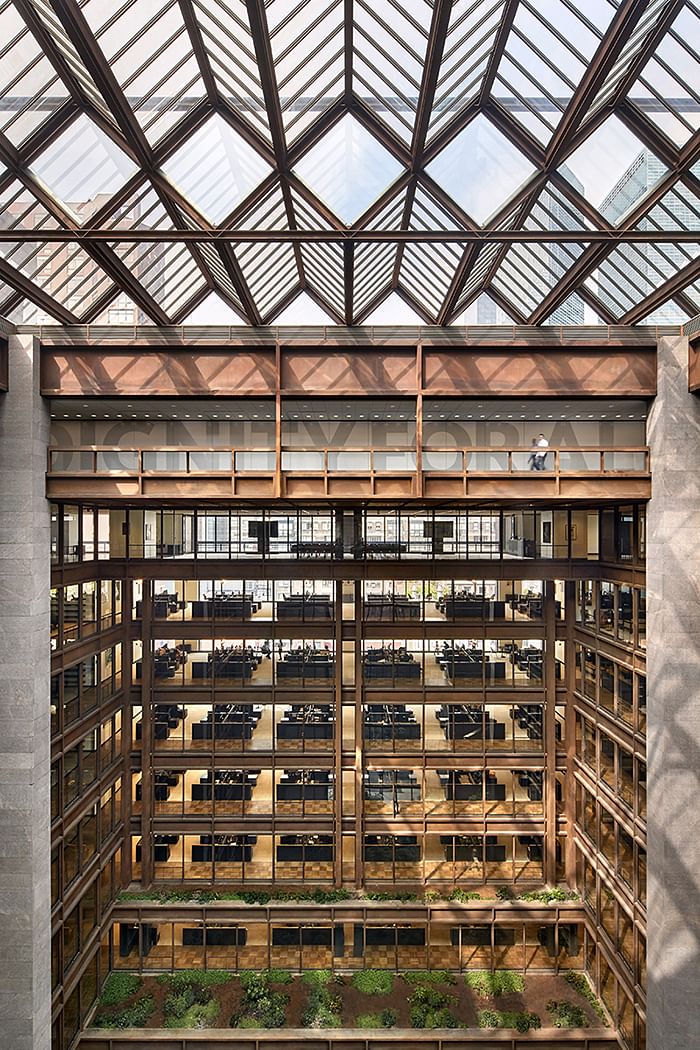
Ford Foundation Center for Social Justice, New York City | Gensler
Project excerpt: “With its interior garden and striking mid-century modern furniture collection, the Ford Foundation building in New York was celebrated as a modernist icon when it was completed in 1968. Now, after a two-year renovation, the building has received a much-needed boost in transparency and accessibility while aligning with the city’s safety code and its Landmarks Preservation Commission requirements. Serving as more than just a headquarters, the renamed Ford Foundation Center for Social Justice is a vibrant hub for those who champion social justice causes. The project began with a request to update the building’s systems and renovate to meet the city’s fire code. However, the complexity of the retrofit prompted an extensive renovation of the building’s façade and interiors in order to meet 21st century sensibilities and higher performance standards.”
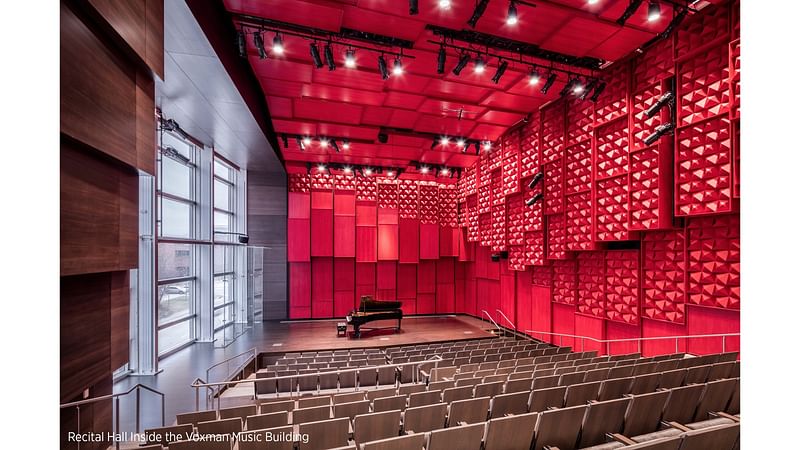
Voxman Music Building, Iowa City, Iowa | LMN Architects
Project excerpt: “In 2008, severe flooding damaged the University of Iowa School of Music, leaving its students adrift with no home on campus and no space for practice and performances. This new, six-story, 184,000-square-foot building relocates the school from the banks of the Iowa River to a vital intersection in downtown Iowa City. Where city meets campus, this project has created a new relationship at the intersection of academic and urban experiences. The team designed the new building for flexible pedagogy, collaboration, and spontaneous performances. Its naturally lit circulation volumes unite to form a three-story lobby atrium that houses a robust gathering area, student commons, and a performance and rehearsal lobby. The new building’s dedicated performance spaces include a 700-seat concert hall, a 200-seat recital hall, and supporting spaces such as rehearsal rooms, classrooms, and private studios. Extensive glazing allows for connections with Iowa City and the communities surrounding it, and a fourth-floor terrace frames views of the city and countryside.”
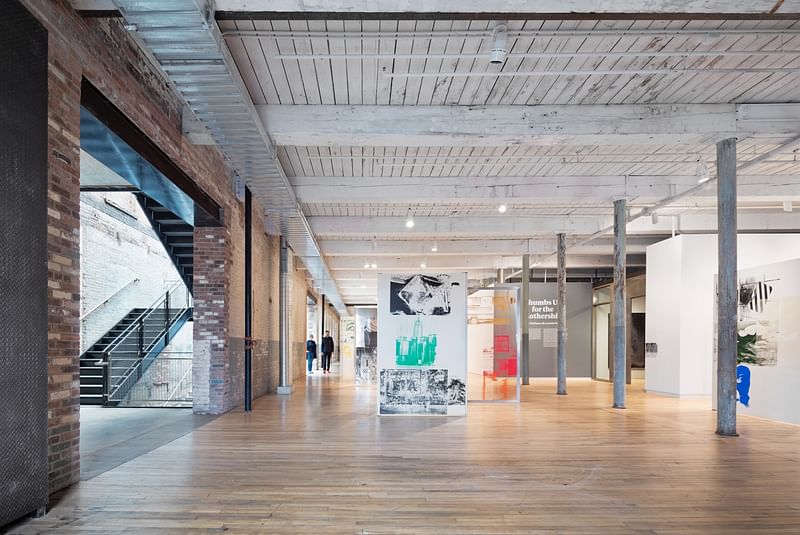
MASS MoCA Building, North Adams, Massachusetts | Bruner/Cott Architects
Project excerpt: “With galleries sculpted from the bones of a former factory, this project marks the completion of the third and final phase for the Massachusetts Museum of Contemporary Art’s 25-year master plan and the complete transformation of a 28-building factory campus that was shuttered in the late 1980s. Inside Building 6, the interiors of existing mill structures become the backdrop for contemporary art galleries. The team wove design interventions in and around more than 1,000 columns and acres of maple factory floors. Existing spaces were renovated with grand gestures, including a two-story central core capped with a glass roof, a lounge placed at the building’s ‘prow,’ and ample openings that invite both visual and artistic connections. Despite the significant alterations, the original building retains its character, context, and history, resulting in a combined work that marries old and new seamlessly.”

Chicago Public Library, West Loop Branch, Chicago | Skidmore, Owings & Merrill
Project excerpt: “The first Chicago Public Library branch built in the burgeoning West Loop neighborhood, this two-story adaptive reuse project transformed former television studios into a new cultural and social center. The conjoined buildings were donated to Chicago by a generous developer to spur the redevelopment of the formerly industrial zone, and the project helps fill a critical resource gap. The team was able to preserve the industrial character of the buildings, and its weathered steel exterior and rust-like patina unifies the facade and guides patrons through a steel-framed entrance. Inside, the renovated interior highlights the original bow-truss ceilings and skylights, lending a loft-like atmosphere that is typical of the neighborhood’s factory-warehouse style. Unnecessary walls were removed throughout, and new openings in the common wall of the buildings unify the interior.”
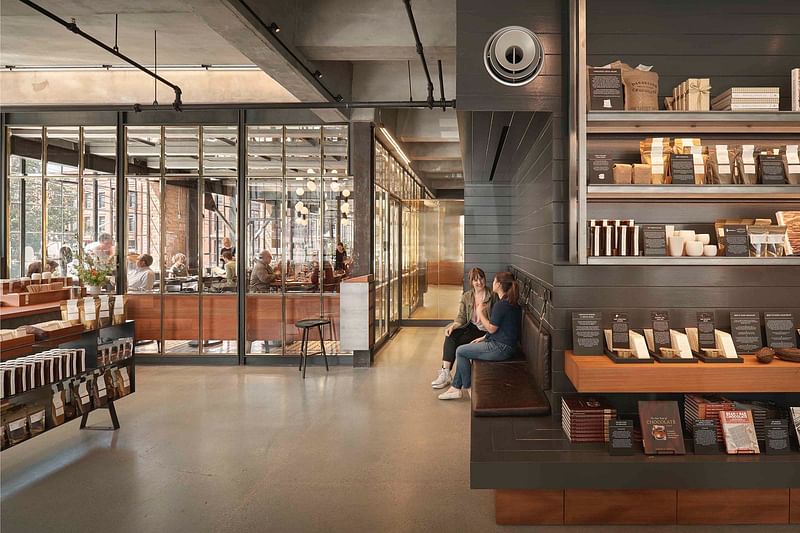
Dandelion Chocolate Factory, San Francisco | Gensler
Project excerpt: “This new home for Dandelion Chocolate in San Francisco embodies the company’s core mission and brand. In a previously vacant century-old industrial warehouse, the growing Dandelion Chocolate has the space it needs to both engage the community and showcase the skill of small-batch artisan chocolate. Founded in the Bay Area in 2010, Dandelion Chocolate has emerged as a leader in America’s craft chocolate movement. Its new home required a wide array of uses, including production space, a cafe, an elegant tasting station, and a retail area. Throughout the redesigned and retrofitted space, every detail engages the senses. To reinforce the idea of craft and tradition, the team opted for finishes and details that echo the spirit of manufacturing. The brush-painted wood siding, handmade tile, and redwood millwork found throughout help enunciate the design intent.”

Google, Spruce Goose, Los Angeles | ZGF Architects LLP
Project excerpt: “Originally built in 1943 for the construction of Howard Hughes’ H-4 Hercules airplane, this 450,000-square-foot hangar now houses a new technological marvel. Restored and transformed, the seven-story, 750-foot-long structure houses workspace, meeting and event spaces, and amenities for Google employees in the Los Angeles area. The structure and the campus that encompasses it were deemed eligible for the National Register of Historic Places in the early 1990s, and both are on the state’s register. To that end, the hangar’s original 75-foot glulam arches and wood sidings were preserved, while the central spine was carefully deconstructed and rebuilt using noncombustible materials. The team also unearthed rows of clerestory windows and restored them to their original sill lines.”
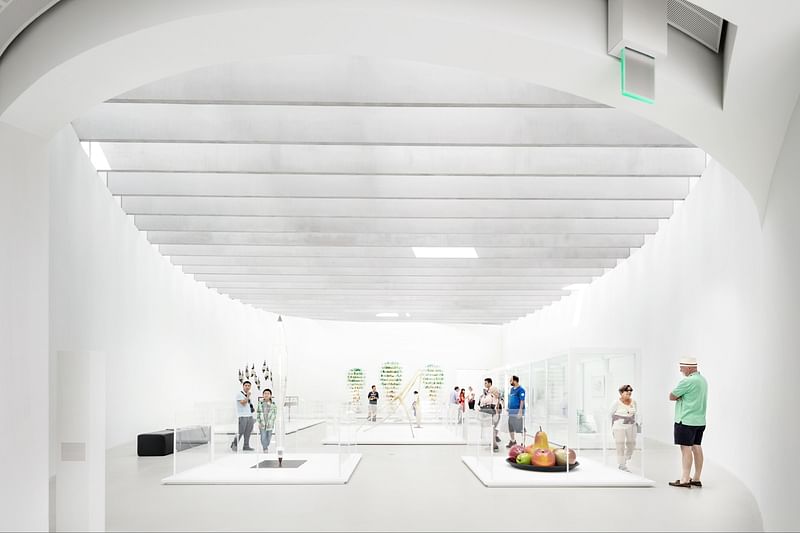
Corning Museum of Glass, Corning, New York | Thomas Phifer and Partners
Project excerpt: “Welcoming nearly 500,000 visitors annually, the Corning Museum of Glass is one of New York’s most popular museums. The museum surveys nearly 35 centuries of glass, from ancient to contemporary works, and since opening in 1951 has seen five major expansions. Each has included innovative glass architecture, and this new 100,000-square-foot Art + Design Wing is no exception. The new wing adds 26,000 square feet of exhibition space and is the museum’s largest space dedicated to the display of contemporary glass art. In addition, it provides new offices for museum staff, a community room for community and school programming, a retail shop, and a renovated hot glass workshop for live demonstrations.”

RELATED NEWS AIA distinguishes four projects in 2020 Regional & Urban Design Awards

RELATED NEWS AIA bestows 2020 Whitney M. Young Jr. Award to Gabrielle Bullock and the Topaz Medallion to David Leatherbarrow

RELATED NEWS Architecture Research Office wins 2020 AIA Architecture Firm Award


Share
0 Comments
Comment as :